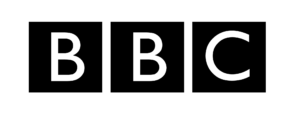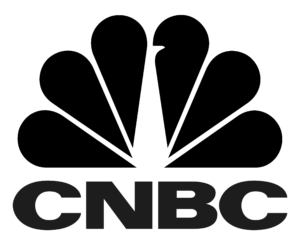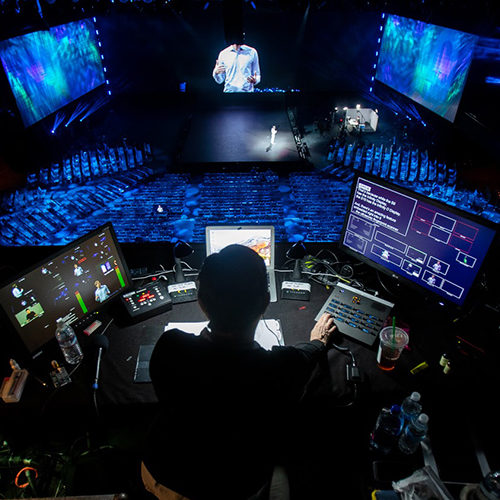What’s the best way to stay on top of the experience economy? Experience it all in one place. Introducing Liquid Dispatch X, your go-to consolidated source for brand experience, employee experience and customer experience. Take a look at the trends, the wins, and the ins and outs of what it takes to keep your most valuable and visible asset—your brand—running strong.
March Article Roundup
HOW BRANDS ARE COMMUNICATING DURING THE CORONA VIRUS
Right now is a difficult time for everyone, people are worried and uncertain. COVID-19 is an unprecedented global event, which is radically disrupting every aspect of our lives—from the economy to the most basic ways in which we interact with others. In the midst of this public health crisis, some brands have decided to stop marketing efforts altogether; some are re-evaluating and calibrating their marketing messaging; while others are focusing on their purpose, and figuring out how they can help relieve some stress and do their part for society. We’ve seen brands pushing to do things right, for example, Walmart is providing access to food for underserved populations by supporting organizations that support food banks, schools and senior meal programs, LinkedIn is offering free learning courses, The New York Times is giving free access to COVID-related news and orientation through the coronavirus outbreak, or Prada that is donating masks and building intensive care facilities. Other brands are trying but falling short, coming out with “tone deaf” campaigns that offer no more than nice marketing messaging.
As we try to make sense of this brave new time, Brands are challenged to respond in meaningful and effective ways to their customers, their employees and communities, while many have to navigate at the same time a difficult economic environment. Let’s take a look at what brands are doing (and not doing) during this uncertain time.
TOP PICKS
KEY TAKEAWAYS
In this edition of Dispatch X, we examine how brands are reacting to the pandemic. Under tough and uncertain conditions, we’re seeing early signs of brands making an effort to leap out of survival mode into reimagining opportunities, reshaping their roles and deepening their commitment to customers and employees.
There are great examples of brands evolving, designing experiences to be more empathic (not just going virtual) and making a contribution during this difficult time. But behind this intention of “doing things right” we see brands aiming to build authenticity, which is the result of brands living their values, and aligning their entire customer and employee experience around that. Seeking this alignment can be powerful, especially in this time, because it yields trust. And it seems that trust and true connection is what’s making the difference when it comes to measuring the strength of a brand in today’s world.
APRIL SPECIAL EDITION ARTICLES
BRAND EXPERIENCE

3 Elements of Your Brand That Can Shine Through in These Harrowing Times — AdWeek, Alina Tang, Lei Wang @Adweek
“As marketers enter uncharted territory and ponder what are the right actions to take to navigate the turbulent waters, they can find the sweet spot in the intersection of three things: the firm’s field of competence, which is what a brand does the best and its unique know-how; the brand identity, which is the voice and DNA that sets the brand apart; and the dynamic needs of the community during the crisis, which include current customers.”
How Brands Are Taking Extra Precaution to Avoid Coronavirus Insensitivities — MarketingDive, Peter Adams @marketingdive @PatchAdams03
“While sensible, the shift toward playing it safe might stymie broader attempts to build brand purpose, an increasingly popular approach that typically carries a degree of risk-taking. Some experts interviewed for this piece warned against peddling too far away from purpose, noting that companies could miss an important opportunity to send a unifying or emotionally resonant message when consumers are deeply uncertain. At the same time, marketers will need to rethink their go-to-market strategies to better account for the realities of coronavirus and be particularly sensitive to its impact on human lives.”

How Are Experiential Marketing Agencies Grappling With Coronavirus? —AdWeek, Ian Zelaya @Adweek @IanDavidZelaya
“The biggest challenge is that the beauty of an event is bringing together a certain amount of people, of a certain mindset, in one place,” Callif said. “Now that events aren’t happening, the challenge is targeting that audience in a similar way, virtually or digitally. How can we accomplish that for clients that unfortunately were part of events that were canceled?”

Ideas For Creating a Sense of Culture, Community Amid Social Distancing and Work-From-Home Mandate — Zoom, Esther Yoon @zoom_us
“Amid mass social distancing and isolation, Chipotle is creating a virtual event for arguably one of the most important aspects of community — conversation over a shared meal. Sharing a meal is an excuse to catch up and talk, and one of the few times where people are happy to put aside their work and take time out of their day to decompress. Keep your teams connected and in touch with a virtual lunch or coffee hour. Fast-casual chain Chipotle is hosting virtual lunch get-togethers all this week, with celebrity guests and free giveaways. You can find the daily Zoom Meeting links on the chain’s Twitter page”

Coronavirus: Louis Vuitton Owner To Start Making Hand Sanitiser — BBC @BBC
“The luxury goods maker says it wants to help tackle a nationwide shortage of the anti-viral products across France. ‘These gels will be delivered free of charge to the health authorities,’ LVMH announced on Sunday. ‘LVMH will use the production lines of its perfume and cosmetic brands... to produce large quantities of hydroalcoholic gels from Monday,’ LVMH said in a statement.
CUSTOMER EXPERIENCE

Consumer Energy Drops on All Four Dimensions Amid COVID-19 — Forrester, Anjali Lai @Forrester @AnjaliLai
“Craft messages that match the emotional tenor of your customers in this moment. Consumers are not keen to take action with your brand, but a near-steady “Novelty” score means that consumers are ready to be messaged to. Brands like Ford, which has replaced all ads promoting vehicles with a message of comfort and hope, illustrate how companies can use marketing to offset current consumer feelings of loneliness, show competency and integrity to offset feelings of skepticism, or position themselves as a partner committed to helping customers regain control.”

Adjusting Your CX Program to Deal with COVID-19 — Qualtrics, Bruce Temkin @Qualtrics, @btempkin
“Since the situation is fluid, your normal barrage of questions may not capture the right information. Most voice of the customer systems are built to track well-defined, ongoing operations. But that's not the case right now. So think about analyzing existing communications (especially in your contact centers), and asking fewer, more open-ended questions like how are you doing? and how can we help? Also, this is a perfect time to add a voice of the employee component to your efforts, so you stay abreast of what your front-line employees are seeing.”

50 Ways Companies Are Giving Back During the Corona Pandemic — Fast Company, Blake Morgan @Forbes @BlakeMichelleM
LinkedIn is opening up 16 of its learning courses for free. Courses that provide tips on how to stay productive, build relationships when you’re not face-to-face, use virtual meeting tools and balance family and work dynamics in a healthy way.
EMPLOYEE EXPERIENCE

How Companies Treat Workers During Pandemic Could Define Brand ‘For Decades’ — CNBC, Kevin Stankiewicz @CNBC @Kevin_Stank
“Sending employees back to work too quickly may be ‘unforgivable’ in the eyes of younger Americans, too, Cuban said. ‘So not only is it smart to take care of your employees, but it’s also good business and that’s the way I’m looking at it.’”

We’re in the Midst of a Massive Work-From-Home Experiment. What If It Works?— Fast Company, Lindsay Tigar @FastCompany
“After COVID-19 passes and businesses try to return to normal, there is a real possibility that professionals may change their tune on what matters most to them. That’s already the case for many, according to research from the International Workplace Group. Their March 2019 findings showed that 80% of job seekers would choose a job with a flexible work-from-home policy over one that doesn’t offer the same benefit.”

Edelman Trust Barometer Special Report on COVID-19 Demonstrated Essential Role of the Private Sector — Edelman @EdelmanPR
“We knew that government and media had trust challenges going into the crisis. The 2020 Edelman Trust Barometer showed that “my employer” was the most trusted institution by 18 points over business in general and NGOs, by 27 points over government and media. That explains our finding that employer communications is the most credible source of information about the coronavirus.”

Guide to Managing Your (Newly) Remote Workers— Harvard Business Review, Barbara Larson, Susan Vroman, Erin Makarius @HarvardBiz @bzlarson @ProfMakarius
“Especially in the context of an abrupt shift to remote work, it is important for managers to acknowledge stress, listen to employees’ anxieties and concerns, and empathize with their struggles. If a newly remote employee is clearly struggling but not communicating stress or anxiety, ask them how they’re doing. Even a general question such as “How is this remote work situation working out for you so far?” can elicit important information that you might not otherwise hear. Once you ask the question, be sure to listen carefully to the response, and briefly restate it back to the employee, to ensure that you understood correctly. Let the employee’s stress or concerns (rather than your own) be the focus of this conversation.”




